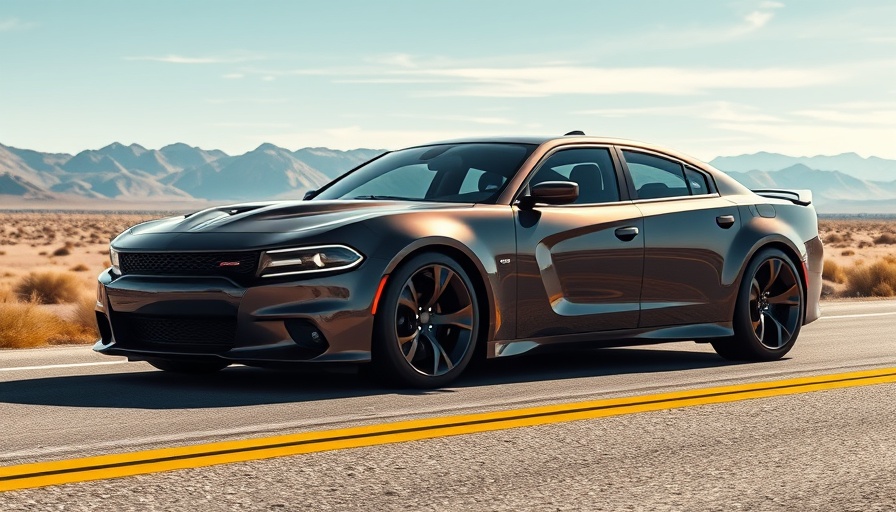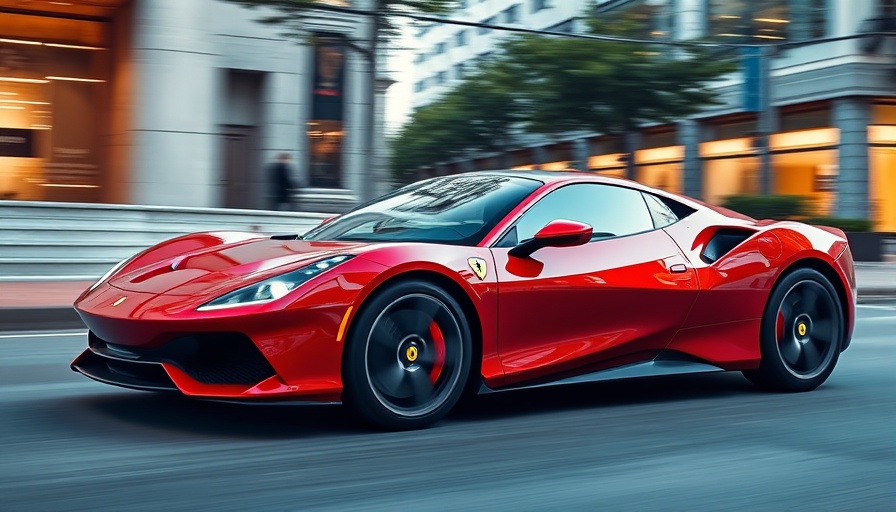
Electric Evolution: The Shift in Dodge's Charger Lineup
In a surprising turn, Dodge has decided to scale back its 2026 Charger Daytona lineup, focusing solely on the Scat Pack variant. As automotive enthusiasts and electric vehicle advocates alike look on, the decision reflects the larger challenges faced by traditional car manufacturers as they navigate the growing demand for electric vehicles (EVs) while maintaining brand identity.
The Disappearance of the Charger R/T
The notable exclusion of the Charger R/T from the upcoming lineup is noteworthy as it aligns with a broader trend in the automotive industry. Consistently, manufacturers are under immense pressure to both evolve their offerings toward electric technology and stay true to the high-performance roots that enthusiasts cherish. The R/T version, once a symbol of Dodge's muscle car heritage, now stands on the sidelines as the market conversation shifts toward sustainability.
Making Sense of the Industry's Electric Shift
With the push for eco-friendly alternatives, manufacturers like Dodge face a pivotal moment. They are not merely transitioning from gas to electric motors but are also tasked with reimagining what performance means in an electric future. According to automotive analysts, this balance between performance and sustainability is particularly challenging for brands steeped in history, like Dodge.
Consumer Reactions: Embracing Change?
As automakers step back from traditional offerings, consumer reactions vary widely. Some enthusiasts celebrate the focus on performance vehicles like the Scat Pack—a powerful embodiment of Dodge’s legacy. Others, however, express concern over the diminishing variety of choices available, leading to worries about the future direction of the brand. This highlights the generational divide in consumer interests, where classic muscle car culture clashes with the expectations of a new, eco-conscious audience.
Understanding the Electric Performance Landscape
Electric vehicles are no longer just about reducing emissions; they also promise exhilarating performance features that rival traditional combustion engines. The development of electric drivetrains capable of delivering instantaneous torque means that performance enthusiasts might find solid ground in the Scat Pack, but it also leaves open questions about future possibilities for other models. Manufacturers, including Dodge, may find they can innovate performance perspectives by creatively merging electric technology with the thrill of driving.
The Future of the Dodge Charger Lineup
What lies ahead for the Charger lineup? Industry predictions suggest that automakers must preserve the essence of their brand while integrating advanced EV technologies to cater to changing consumer preferences. A blend of innovation and nostalgia may help navigate this transition successfully. Dodge's decision serves as a reminder that sustainability and performance do not have to be mutually exclusive as the industry enters a rapidly evolving age. With that said, it raises the question of how many other classic nameplates will continue adapting in the face of a greener tomorrow.
As the automotive landscape continues to transform, consumers and enthusiasts alike should remain informed about these changes. By doing so, they can actively contribute to discussions about what they want from the future of driving. In navigating the road ahead, understanding where Dodge and other manufacturers stand will be crucial.
It's time for consumers, old and new, to voice their expectations about the vehicles they want to see on the roads. Stay engaged, drive informed, and participate in the shift towards a sustainable automotive future.
 Add Row
Add Row  Add
Add 




 Add Row
Add Row  Add
Add 

Write A Comment